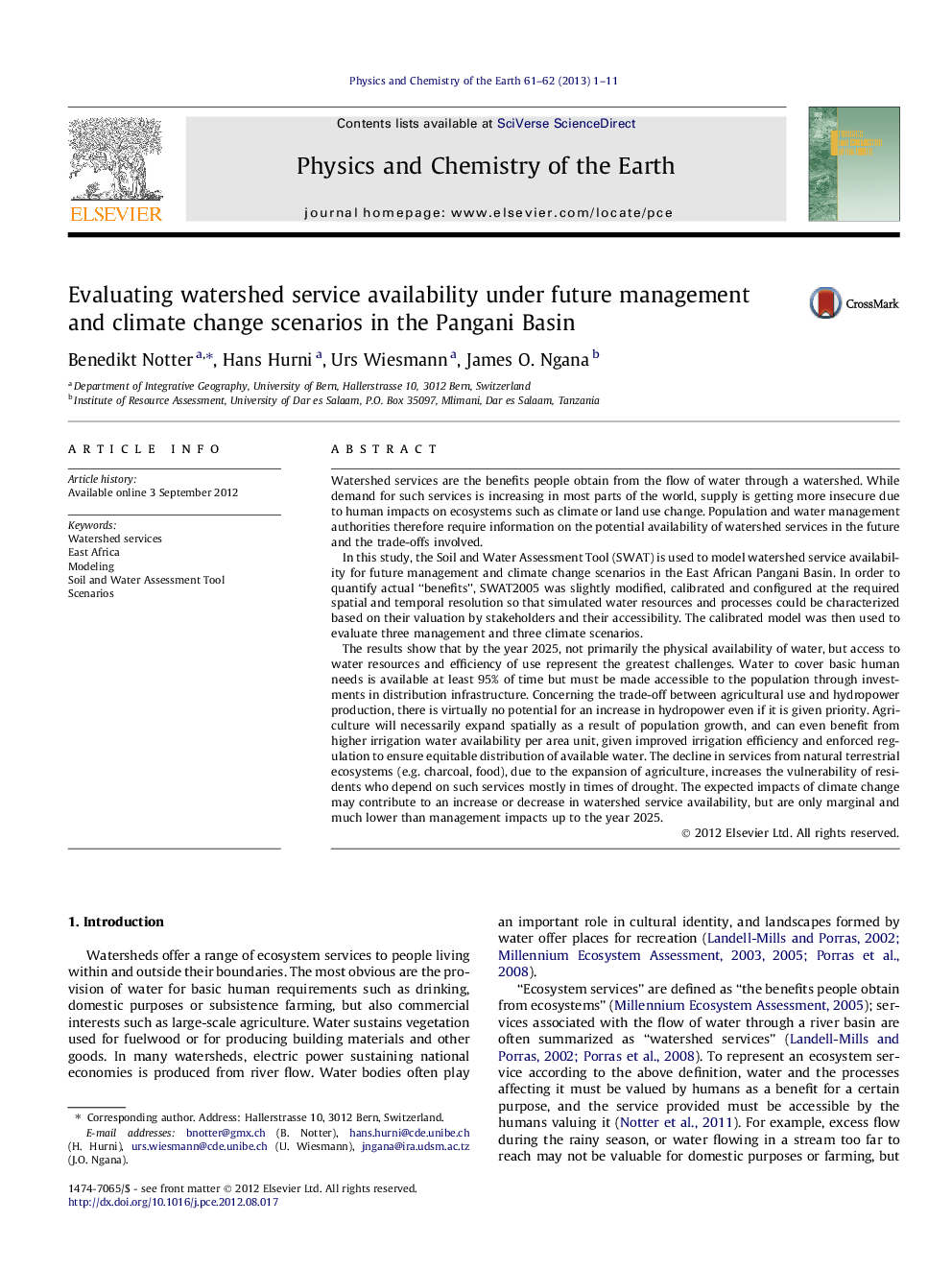| Article ID | Journal | Published Year | Pages | File Type |
|---|---|---|---|---|
| 4720995 | Physics and Chemistry of the Earth, Parts A/B/C | 2013 | 11 Pages |
Watershed services are the benefits people obtain from the flow of water through a watershed. While demand for such services is increasing in most parts of the world, supply is getting more insecure due to human impacts on ecosystems such as climate or land use change. Population and water management authorities therefore require information on the potential availability of watershed services in the future and the trade-offs involved.In this study, the Soil and Water Assessment Tool (SWAT) is used to model watershed service availability for future management and climate change scenarios in the East African Pangani Basin. In order to quantify actual “benefits”, SWAT2005 was slightly modified, calibrated and configured at the required spatial and temporal resolution so that simulated water resources and processes could be characterized based on their valuation by stakeholders and their accessibility. The calibrated model was then used to evaluate three management and three climate scenarios.The results show that by the year 2025, not primarily the physical availability of water, but access to water resources and efficiency of use represent the greatest challenges. Water to cover basic human needs is available at least 95% of time but must be made accessible to the population through investments in distribution infrastructure. Concerning the trade-off between agricultural use and hydropower production, there is virtually no potential for an increase in hydropower even if it is given priority. Agriculture will necessarily expand spatially as a result of population growth, and can even benefit from higher irrigation water availability per area unit, given improved irrigation efficiency and enforced regulation to ensure equitable distribution of available water. The decline in services from natural terrestrial ecosystems (e.g. charcoal, food), due to the expansion of agriculture, increases the vulnerability of residents who depend on such services mostly in times of drought. The expected impacts of climate change may contribute to an increase or decrease in watershed service availability, but are only marginal and much lower than management impacts up to the year 2025.
► Future management and climate scenarios for Pangani Basin were simulated using SWAT. ► Watershed service availability indicators were derived from model outputs. ► Investments in infrastructure can improve water provision even with increased demand. ► The decline of natural vegetation increases vulnerability of subsistence farmers.
